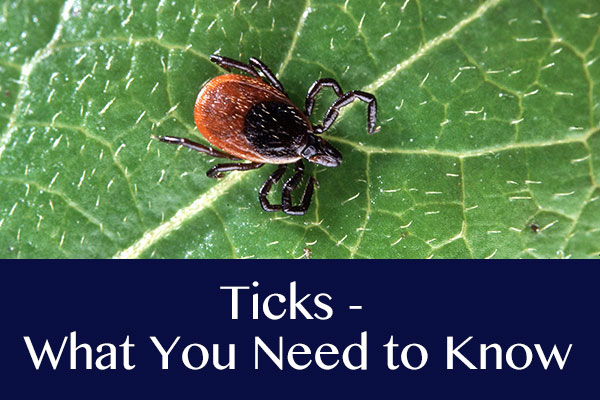
“My mom says I spend too much time on the web.“
– A young spider
The Basics:
Summer is tick season, and the milder our winters get, the farther north the ticks spread. Milder winters also mean a higher percentage of ticks will be infected with Lyme disease.
Ticks are parasitic arachnids, like spiders. Adult deer ticks are about the size of an apple seed, and can look like a loose scab or skin tag until you look at it closer.
When it comes to ticks, Lyme disease is the key concern. Lyme disease is a serious inflammatory disease that can lead to arthritis, cardiac arrest, and neurological disorders if left untreated. The good news is that it’s easily treated if diagnosed early, and fortunately lyme disease is not as hard to diagnose as most people think.
Don’t Panic:
You’re most likely to encounter a tick in the woods or in tall grass. Contrary to popular belief, they don’t jump, fly, or leap from tall trees to ambush you. If you have one, it’s most likely crawled up your feet (avoid open shoes) or latched on-to bare skin as you walked by.
Examine yourself or have someone else examine you once you leave the wooded or tall grass area. If you find a tick, don’t panic. You have at least 24 hours before a tick infected with Lyme disease passes it to you.
Only Deer ticks (called Blacklegged or Bear ticks in the US) carry Lyme disease, and not all of these ticks carry the diesase. Deer ticks have black legs and a reddish back.
Prevention:
There are a few steps you can take to prevent Lyme disease. These include using insect repellent, reducing the tick habitat by cutting long grass and using pesticides and removing ticks that are found on the skin.
When you find a tick on your skin, there is a possibility that it already has his head stuck in your skin. If you find a tick, grab some fine-toothed tweezers and pinch the tick as close to its head as possible. Don’t yank it, but apply even pressure and pull upwards being careful not to tug the head off. Once it’s out, clean the bite well with rubbing alcohol, iodine or soap and water.
Do not smash, pull, burn, or otherwise mutilate the tick in a way as it can leave its head inside your skin and increase the risk of disease transmission.
Lyme Disease:
Lyme disease has 3 stages. They progress quickly, the earlier it’s caught, the better:
- Stage 1: Early Infection (first few days after infection)
- Stage 2: The Infection Spreads (days or weeks after)
- Stage 3: Chronic Lyme (days to weeks after, and for months or years if it’s untreated)
Lyme disease is highly treatable in stage 1, but gets complicated and dangerous after that. There are many symptoms of Lyme disease, but the most common ones include:
- A “bullseye” rash where the tick bit you, with the darkest red just around the bite.
- Fever
- Joint and Muscle Pain
- Fatigue
- Headache
If you experience these symptoms and think that you may have been exposed to ticks or know that you have been bitten by a tick, seek medical care and inform your health care provider.